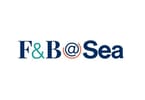CHICAGO – A sharp slowdown in business travel, the best moneymaker for major airlines, will cut into U.S. carriers’ profits this year, and the picture doesn’t look much better for 2010.
According to the Federal Aviation Administration, overall domestic air passenger traffic will fall nearly 9% this year, while international bookings are expected to decline by 2.4%. The FAA expects to see travel growth return in 2010. But business travel may take longer to recover.
Business travel, which accounts for most first-class and business-class ticket sales, has suffered from deeper cutbacks than leisure travel, as companies face a global recession. Even when trips aren’t canceled, employees increasingly are moving to economy class seats.
Airline consultant Michael Boyd estimates that trans-Atlantic passenger revenue, mainly driven by business travel, is down 15 already this year compared with 2008. He said he thinks airlines will need to keep shrinking capacity this year and into 2010, as passenger demand remains weak and costs, especially for fuel, keep rising. “Growth is not in the picture,” he said.
Ken McGill, travel analyst at Global Insight, said in a presentation this week that he believes the U.S. economy will start growing early in 2010, spurring more interest in leisure travel. But business travel, hard hit by falling corporate profits amid dried-up credit markets, will take longer to turn around. There’s also what he calls the “AIG effect,” including public scrutiny of corporate spending, and the potential “vilification of business travel spending.”
The U.S. government’s fiscal stimulus plan should increase some business spending for travel, McGill said, but he predicted that the number of business trips for the next four years will be sharply lower than the peak year, in 2008. Overall travel prices are expected to bottom out in mid-2010, he said. During 2008, he said, “falling prices will more likely result in a shift in spending rather than additional spending or trips.”
Boyd, who heads The Boyd Group in Evergreen, Colo., said the first sign of a travel turnaround will emerge when consumers start booking more trips to Las Vegas. He said he doesn’t expect that market to pick up until 2011, with an upswing in business travel to come even later.
If travel demand were to pick up next year, U.S. airlines, which have substantially downsized in the past year, would be unable to fill the demand, Boyd said. “That would be great for the airlines, but tough for passengers,” and would limit business travel growth.
Meanwhile, Boyd said, carriers like Delta Air Lines Inc., American Airlines, a unit of AMR Corp., and Continental Airlines Inc., have adequate liquidity to weather turbulence this year, and the flexibility to ground more aircraft if fewer passengers are flying.
WHAT TO TAKE AWAY FROM THIS ARTICLE:
- government’s fiscal stimulus plan should increase some business spending for travel, McGill said, but he predicted that the number of business trips for the next four years will be sharply lower than the peak year, in 2008.
- Ken McGill, travel analyst at Global Insight, said in a presentation this week that he believes the U.
- He said he doesn’t expect that market to pick up until 2011, with an upswing in business travel to come even later.






















